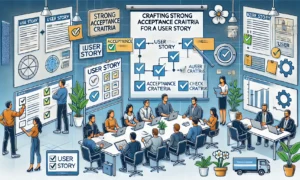Introduction
In the fast-paced world of product management, the ability to quickly identify and validate which product ideas will succeed is paramount. Every product manager has faced the dilemma of whether a new feature or idea is worth pursuing. While some ideas show immediate promise, others turn out to be costly detours that waste valuable resources. With limited time and resources, it’s crucial to develop a process for quickly determining which ideas have the potential to drive value and which are likely to fall flat.
This article will explore practical strategies and methods for product managers to efficiently evaluate product ideas and determine their viability early in the process, ensuring that teams focus on the ideas that will deliver the most impact.
Why It’s Crucial to Validate Ideas Quickly
In product management, time is often the most limited resource. Whether you are working in a startup or a larger organization, every team faces a constant push to iterate quickly, launch new features, and improve the user experience. Yet, it’s easy to get excited about new ideas without properly assessing their viability first.
Failing to evaluate ideas efficiently can lead to:
- Wasted time and money on features that don’t resonate with users.
- A misalignment between product features and customer needs.
- A slow-down in development as teams work on features that don’t contribute to strategic goals.
For these reasons, quickly identifying which ideas have potential is not just a luxury; it’s a necessity. By leveraging the right strategies, product managers can avoid these pitfalls and build products that truly align with user needs and business goals.
Effective Strategies to Identify Which Ideas Will Work
1. Start with a Clear Problem Statement
One of the best ways to quickly assess a product idea is to start by framing it in terms of the problem it is meant to solve. If the problem is not clearly defined or validated, it’s likely that the idea will not resonate with users, no matter how innovative the solution appears to be.
A clear problem statement helps you focus on what really matters to users and ensures that every idea aligns with solving a specific pain point. Use customer insights, surveys, or data to ensure that the problem is valid and significant.
- Example: Instead of thinking, “Let’s build a new feature for personalization,” the problem statement could be, “Our users are having trouble finding products that match their preferences, and they are abandoning their searches too early.”
Starting with a clear problem statement will help you weed out ideas that do not directly address real user challenges.
2. Run Quick User Validation Tests
Before dedicating significant resources to building out a feature or product idea, it’s important to run quick validation tests. This process helps product managers determine if users would actually find the idea valuable.
There are several ways to quickly validate ideas:
- Landing Page Tests: Create a simple landing page that explains the idea and invites users to sign up or show interest. This can give you early insights into whether people are willing to engage with the concept.
- Surveys and Polls: Ask your existing users if they would be interested in the idea or if it would solve a real problem for them. Tools like Typeform or Google Forms can help you quickly gather user input.
- Interviews and Focus Groups: Conduct short, informal interviews with a small group of customers to get qualitative feedback on the idea. This can provide valuable context and help you gauge interest.
- Prototype Testing: If feasible, create a low-fidelity prototype or mockup of the idea and test it with real users to understand how they would interact with it.
These methods are low-cost ways to test whether the product idea is something users are willing to adopt. They also help you determine whether your assumptions are aligned with real user needs.
3. Analyze Data and Market Trends
In addition to direct user feedback, analyzing existing data can provide invaluable insights into which ideas are worth pursuing. Look at existing product analytics, customer behavior patterns, and competitor offerings.
- User Behavior: If you notice recurring pain points or high drop-off rates on certain features, it could indicate an opportunity for improvement or innovation.
- Market Research: Keep an eye on broader industry trends and emerging technologies. Understanding what your competitors are doing or where there are gaps in the market can help inform which ideas have the most potential.
- Data-Driven Decision Making: Use tools like Google Analytics, Mixpanel, or Amplitude to track how users interact with your product and identify opportunities for new features or improvements. This will ensure you are making decisions based on solid data rather than gut instinct.
4. Apply a Lean Approach with Minimum Viable Products (MVPs)
Instead of fully building out an idea, adopt a lean product development approach by creating a Minimum Viable Product (MVP). An MVP allows you to test the core functionality of an idea with real users while minimizing resources.
- Test with Real Users: An MVP helps you put the idea in front of real users and gather feedback without committing significant resources to full-scale development.
- Learn and Iterate: Based on feedback, you can either refine the MVP or pivot to a different idea if it’s not resonating with users. This approach helps you quickly discover what works and what doesn’t.
By creating a simple version of the idea, you can validate the product’s potential before investing heavily in its development, reducing both risk and time to market.
5. Evaluate Against Key Business Metrics
Another way to quickly determine if an idea will work is by evaluating it against your company’s key business metrics. Ask yourself how the idea aligns with the broader business goals and strategic vision.
- Does this idea solve a pain point that drives business growth?
- How does this idea align with your product roadmap or strategic initiatives?
- What impact does it have on user retention, conversion, or engagement?
By evaluating the idea’s potential impact on your business goals, you can prioritize the ideas that will have the most significant impact.
When to Walk Away: Knowing When an Idea Won’t Work
Not every idea will succeed, and knowing when to walk away is just as important as knowing when to pursue an idea. Here are a few signs that an idea might not be worth pursuing:
- Lack of user interest: If validation tests and customer feedback consistently show little to no interest, it’s a sign that the idea may not solve a critical problem for your users.
- Misalignment with business goals: If the idea doesn’t align with your company’s strategic vision or key performance indicators (KPIs), it’s likely not worth pursuing.
- Excessive cost or complexity: If the idea requires too much time, money, or resources to implement with little return, it may not be worth the effort.
Knowing when to abandon an idea is just as important as knowing when to pursue it. Being able to quickly cut your losses will help ensure you don’t waste valuable resources on projects that won’t drive results.
Conclusion
Product management is an ongoing process of learning, iterating, and adjusting based on real-time data and user feedback. While it can be exciting to chase new ideas, the key to product success is the ability to quickly determine which ideas will work and which won’t.
By starting with a clear problem statement, validating ideas with users, leveraging data, applying MVPs, and evaluating ideas against business goals, product managers can make informed decisions and focus on the ideas that will truly drive value. The faster you can determine which ideas have potential, the more time and resources you’ll have to develop the solutions that will make a real impact on your product and your customers.
Disclaimer
Posts in the Notebook are written by individual members and reflect personal insights or opinions. Please verify any information independently. If you have any concerns, notify the admin immediately so we can take action before any legal steps are taken.





